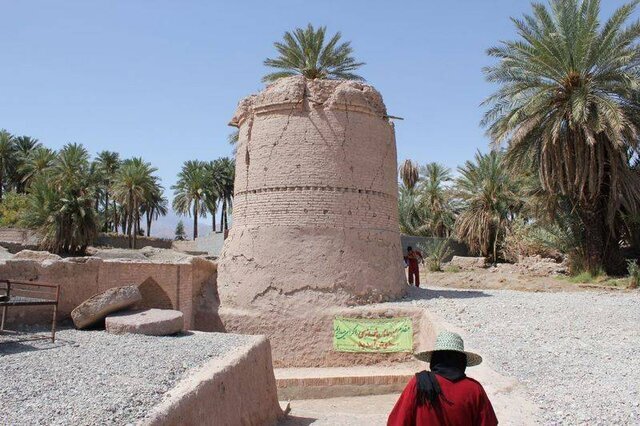Shahdad: work starts on long-awaited watermill restoration

TEHRAN - Work has started on a long-awaited restoration of a quack-hit watermill, which is located in the touristic region of Shahdad on the margins of the UNESCO-registered Lut Desert in southern Iran.
The project is aimed to restore the mill’s [mad-brick] tower and parts of its entrance wall suffered damage and cracked due to an earthquake in [the Iranian year] 1360 (1981-1982), Shahdad’s tourism chief said on Monday.
“The watermill dates from the Qajar period. In fact, it is the only watermill in Kerman province that has an observation tower,” Hojjat Ebrahimizadeh said.
“It has been registered on the national list of cultural heritage under the number 6120.”
The historical watermill is routinely visited by domestic and foreign tourists throughout the year, the official added.
Ancient watermills in Iran were typically constructed by the then-design requirements. For instance, some of them feature dome-shaped roofs with high-enough vestibules to allow camels or other livestock to move back and forth with ease to convey grains or flour.
Shahdad is home to shifting sands, salt plains, meteorite fields, and rocky terrain, which offers visitors breathtaking vistas and unparalleled serenity of the intact nature and wilderness. It has long been a destination for adventurers, nature lovers, off-roaders, and trekkers.
The Lut Desert, widely referred to as Dasht-e Lut (“Emptiness Plain”), is a large salt desert encircled by the provinces of Kerman and Sistan- Baluchestan, and South Khorasan. The desert is also considered one of the top areas in the world for finding meteorites, thanks to its unique parameters. In recent years, significant finds have been made, with the efforts of national and international teams of researchers.
Vertical-axis windmills
Apart from its special watermills, the majority of which have been installed in underground spaces supplied by subterranean qanat systems, Iran is famed for its ancient vertical-axis windmills, which are locally known as Asbads.
Experts believe such primitive yet significant machines bear testimony to the human being’s adaption to nature by transforming environmental obstacles into opportunities.
Technically speaking, unlike European windmills, the Iranian design is powered by blades arrayed on a vertical axis in which the wind power is directly translated down without the need for any gears found on the horizontal-axis mills.
UNESCO says such a windmill uses a smart technique to grind grains, a technique that goes back to ancient times when the people living in the eastern parts of Iran invent it in an attempt to adapt themselves to nature and transform environmental obstacles into opportunities.
The development of Asbads took place due to the scarcity of water resources and continuous 120-day winds, which annually sweep through the east and southeast of the Iranian plateau from late May to late September.
Britannica says the earliest known references to windmills are to a Persian millwright in 644 CE and windmills in Seistan [Sistan], Iran, in 915 CE.
AFM
Leave a Comment